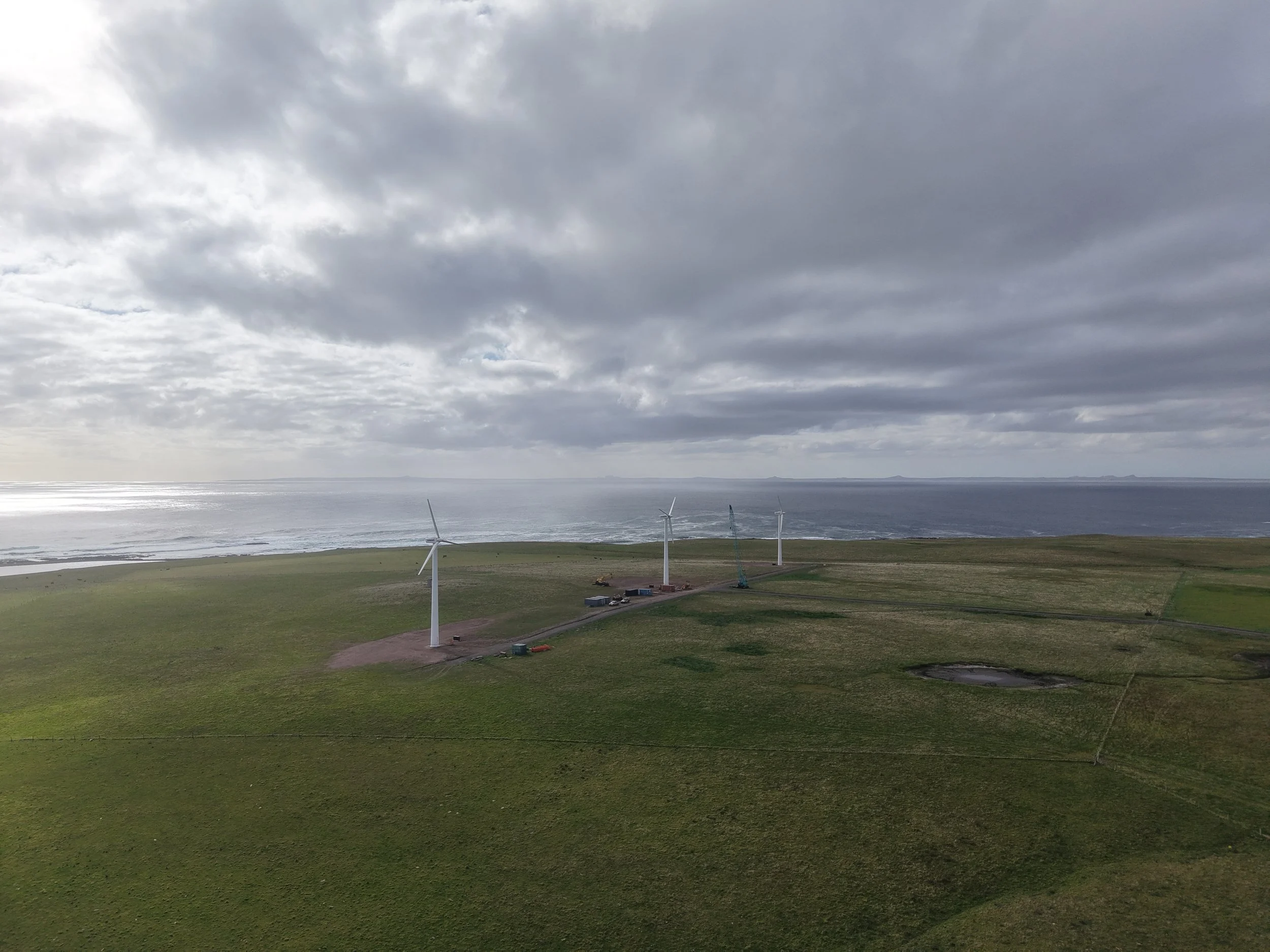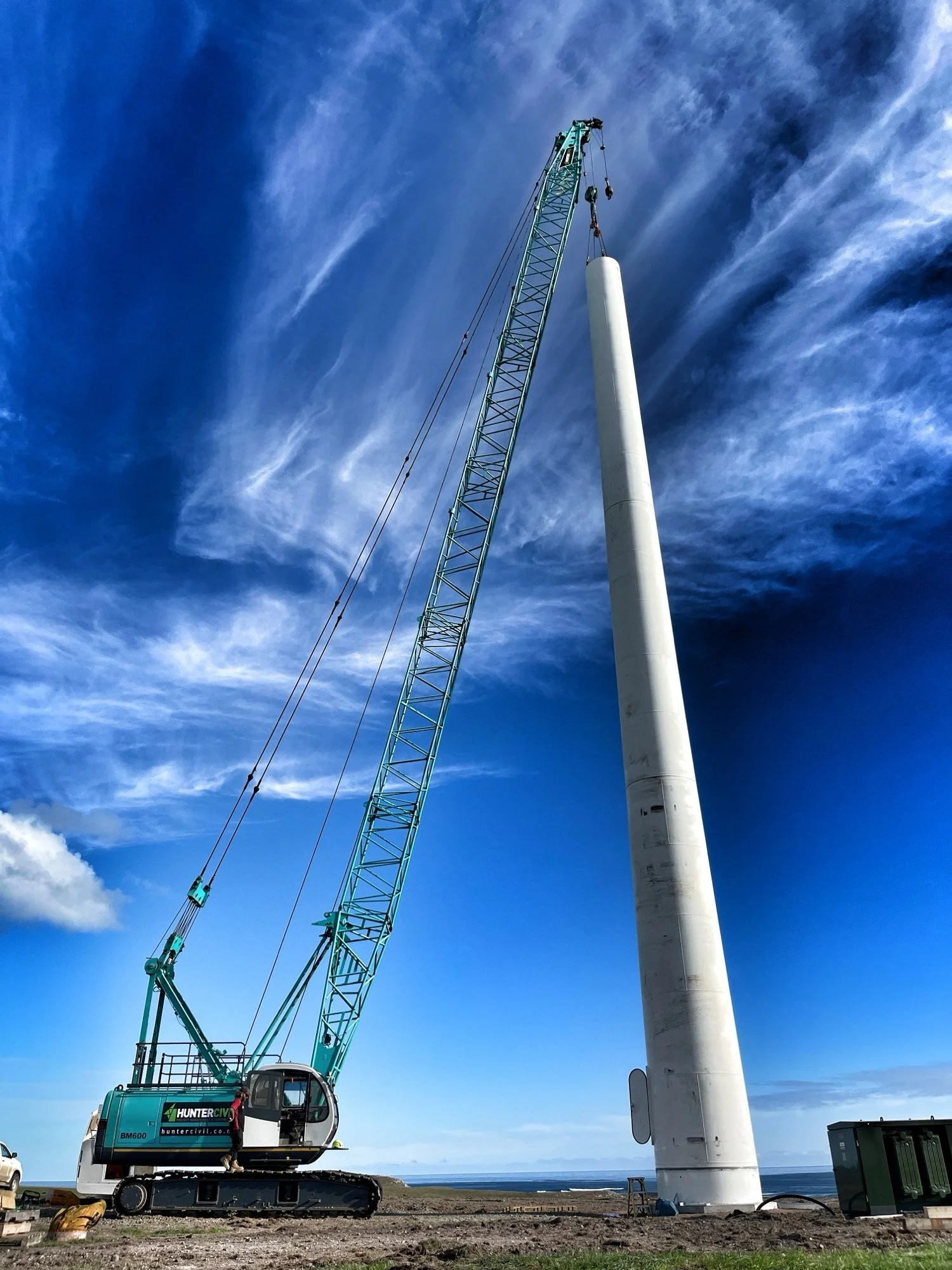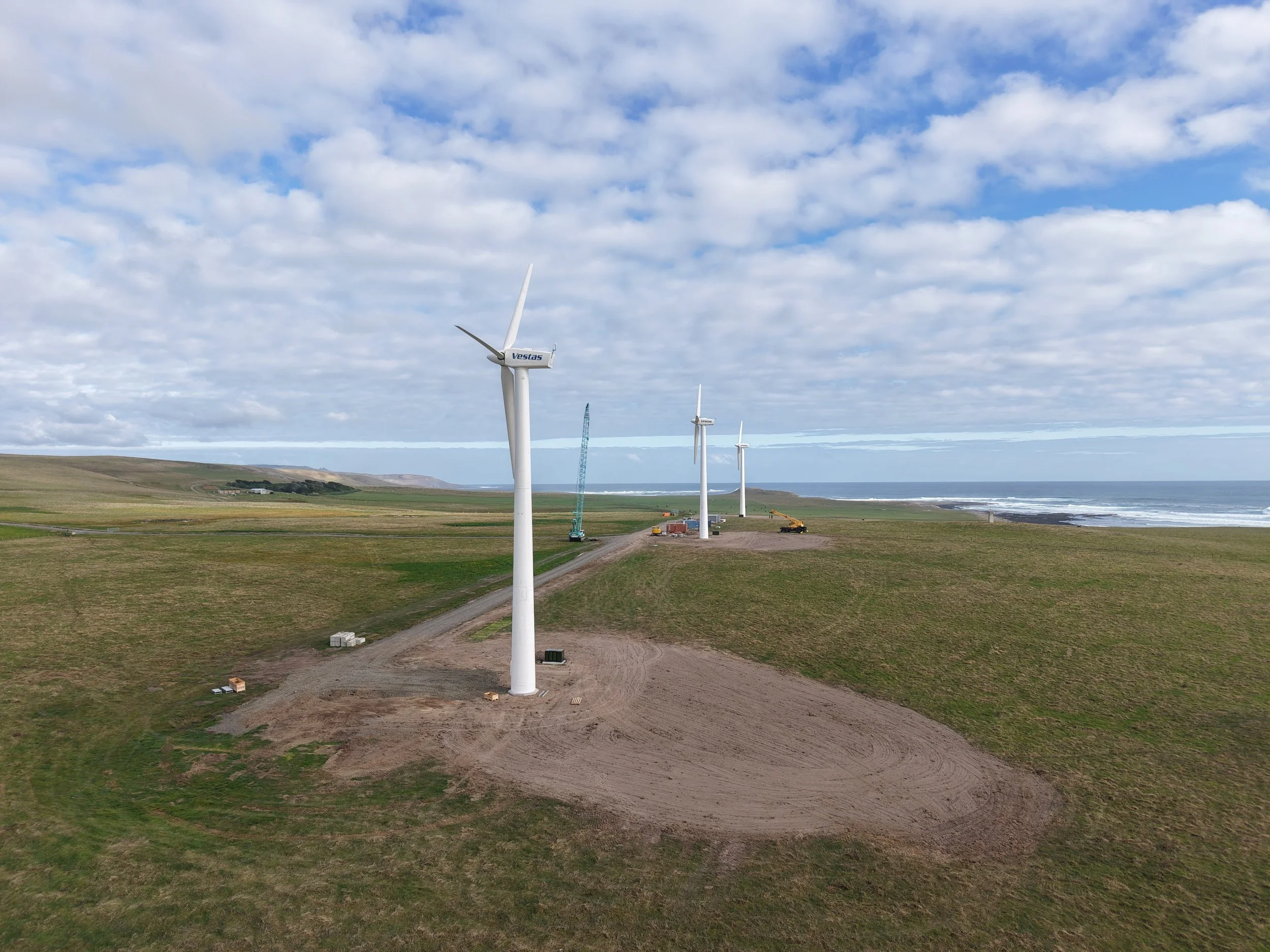Point Durham Wind Farm
Chatham Islands Renewable Energy Project
The Point Durham Wind Farm marks a major shift in how the Chatham Islands generate and use electricity. For decades, the island relied almost entirely on diesel — costing residents more than four times the mainland power price and creating ongoing vulnerability whenever shipping or fuel supply was disrupted.
Why We Needed Change
Power cost 129.5c/kWh — among the highest in New Zealand.
Electricity was produced almost entirely by diesel generators, costing CIEL around $1.8 million per year.
Shipping delays put fuel supply — and therefore island power security — at risk.
Unpredictable energy costs held back economic growth.
What We Built
After a detailed review of solar, hydro and wind options (funded by the Provincial Growth Fund), wind power proved the most reliable and cost-effective solution for our island environment.
In 2023, CIEL received a $10 million Climate Emergency Response Fund grant to build the wind farm at Point Durham. Over 22 months the project progressed through design, consenting, construction and installation.
The completed wind farm includes:
Three Vestas V27 wind turbines (225 kW each), located on land owned by Gary and Eileen Cameron.
A Grid Balancing Plant at the Sandstone power station — including a 576 kW battery — which allows the diesel generators to completely shut down when wind supply exceeds demand.
Smart controls and safety systems that manage fluctuating wind speeds and ensure reliable delivery to the grid.



What It Means for the Islands
CIET Chair, Hamish Chisholm, says the project is “a step toward a sustainable, resilient future,” delivering more stable power prices, strengthening business confidence and supporting population growth.
It also enhances the reputation of key sectors — fishing, agriculture, tourism and conservation — by aligning them with cleaner, renewable energy.
Where We Are Now
Since becoming operational, the island has already experienced days running 100% on wind power, with diesel generators completely shut down.
In early November, the system achieved a seven-day average of 90% renewable energy.
Every full day powered by wind saves the community around $5,000 in diesel and significantly reduces emissions.
Our Goals
62–68% of the island’s electricity from renewable sources.
1,300 tonnes less carbon emissions per year.
Diesel use reduced from $1.8m to around $600k per year.
The Specs
The wind farm will generate more power than the island can use at times — around 600,000 kWh per year. CIET is exploring future opportunities for this surplus, such as community heating projects or shared cold-storage facilities.
Wind Turbines
Number of Turbines 3
Make & Model Refurbished Vestas V27
Generator Capacity 50 kW & 225 kW
Voltage & Frequency 400 Volt 50 Hz 3 Phase
Tower Height 30m
Blade Length 13m
Grid Balancing Plant
Battery Inverter 90 kVA
Battery Capacity 576 kWh (1C)
Synchronous Condenser 900 kVA
Energy Bank 635 kW (5 kW/Step)
Looking Ahead
The wind farm will generate more power than the island can use at times — around 600,000 kWh per year. CIET is exploring future opportunities for this surplus, such as community heating projects or shared cold-storage facilities.

